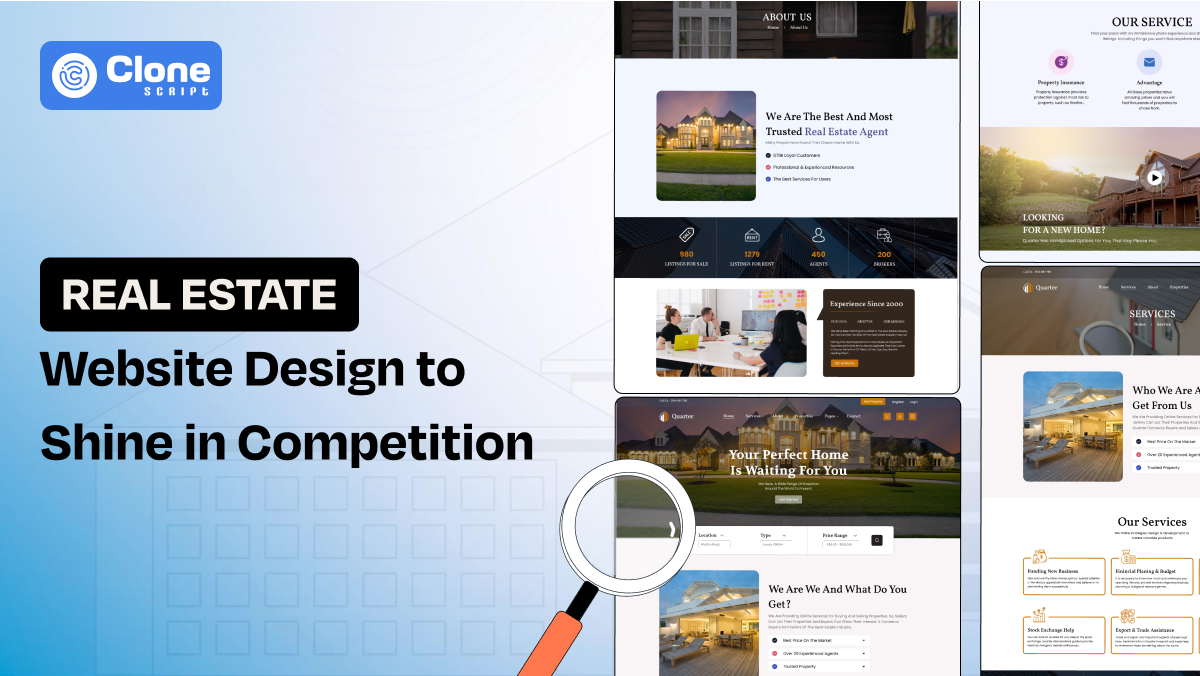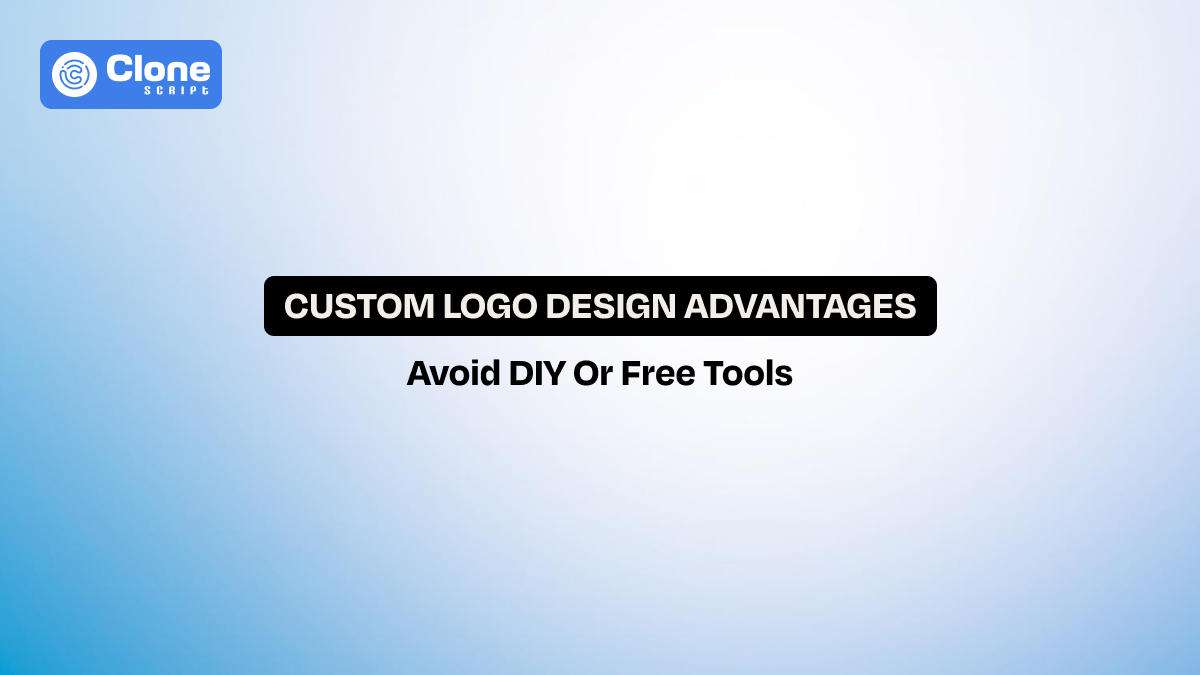How to Design a Real Estate Website That Stands Out from the Competition
Getting a better position in the real estate market can’t be done without a well-designed website. The majority of buyers and sellers begin their property journey online, and the quality of a real estate website design determines whether a visitor stays to explore or clicks away within seconds.
With so many real estate websites available, standing out requires more than flashy colors and logos. It demands thoughtful, user-focused design that meets real business goals.
A well-planned real estate website design does more than display properties. It drives engagement, converts visitors into leads, and builds long-term trust with clients. In this blog, we’ll explore the essential strategies and design elements that separate an average real estate website from a high-performing one.
Let’s start.
First, Know the Purpose Before You Design.
Understanding the website's goal shapes every design decision. A real estate website isn’t just a digital brochure; it’s a lead generation tool, branding platform, and client engagement hub. Clarifying the purpose creates alignment between functionality and user expectations.
Key objectives include:
-
Showcasing property listings effectively.
-
Encouraging users to inquire or schedule visits.
-
Building trust in the real estate brand.
-
Supporting SEO and local marketing efforts.
-
Creating a seamless user journey.
By focusing on these objectives, the design can deliver real business value, not just good looks.
Keep the Design Clean and Focused.
Overcrowded layouts overwhelm users and drive them away. A clean design improves clarity, keeps attention on the right elements, and guides the user journey. Simplicity makes the site feel modern and professional, which is essential in the real estate space.
Design elements to focus on:
-
Use white space strategically for balance
-
Keep a clear visual hierarchy
-
Make calls-to-action stand out
-
Stick to 2–3 primary brand colors
-
Avoid information overload on the homepage
Clean, structured layouts help visitors navigate easily and take action faster.
Prioritize an Intuitive Search Experience.
A powerful search function is the heart of a real estate site. Users need to quickly find properties that match their criteria without frustration. Make the experience interactive, accurate, and responsive across all devices.
Search design best practices:
-
Prominently place the search bar above the fold.
-
Add filters like location, budget, property type, and bedrooms.
-
Provide auto-complete for city/area names.
-
Include a map-based search option.
-
Offer results that update dynamically.
A smart search tool keeps users engaged and leads them to their perfect property faster.
Make Listings Rich, Visual, and Actionable.
Property listings are the most visited pages, so they must be visually appealing and packed with useful information. Users should see everything they need to make a decision or take the next step without leaving the page.
Must-have listing features:
-
High-quality image gallery or video tour.
-
Key specs (price, size, type, location) at a glance.
-
Google Map integration
-
"Schedule a Visit" and "Contact Agent" CTAs.
-
Save, share, and compare features.
Well-structured listings reduce bounce rates and increase buyer confidence.
Responsive Design is Not Optional, It’s Important.
Mobile usability can’t be overlooked. Most users browse homes on their phones. A responsive real estate site adapts to various devices, providing a consistent, frustration-free experience on all screen sizes.
Mobile-friendly considerations:
-
Touch-friendly buttons and forms
-
Collapsible menus with clear icons
-
Fast-loading media optimized for mobile
-
Simplified content layout
-
Location-based search tools
If a website isn’t mobile-ready, it’s losing both users and search rankings due to Google’s mobile-first indexing.
Optimize Website Speed and Performance.
Real estate sites include rich media, which can slow things down. Page speed directly impacts user satisfaction, bounce rate, and SEO rankings. A fast site helps users stay and engage instead of leaving mid-scroll.
How to improve speed:
-
Compress and lazy-load images.
-
Minimize CSS and JavaScript.
-
Use fast, secure hosting.
-
Enable browser caching and CDN.
-
Avoid too many plugins or scripts.
Optimizing website speed leads to better search visibility and higher lead conversion rates.
Build Trust Through Visual Branding.
Consistent visual identity builds credibility. Real estate is built on trust, and users are more likely to work with a brand that looks professional and reliable from their first interaction.
Branding elements to include:
-
Consistent logo, colors, and font usage.
-
Modern and professional design style.
-
Visual cues like custom icons and badges.
-
Prominent testimonials and awards.
-
Use of brand-aligned photography.
A visually professional site strengthens recognition and leaves a lasting impression.
Make Lead Generation Easy and Obvious.
The main goal of any real estate website is to convert visitors into leads. Strategically placed forms and CTAs help guide users toward making contact without feeling pressured or confused.
Lead capture tips:
-
Place CTAs like “Schedule Tour” or “Ask an Agent” visibly.
-
Include short inquiry forms on listings and blogs.
-
Use sticky contact buttons or chat widgets.
-
Integrate forms with CRM tools.
-
Offer value (e.g., free market report) for contact details.
Simple, well-placed lead capture elements significantly boost conversion rates.
Include Agent and Office Information.
Buyers want to know who they’re working with. Personal touches like agent bios and team introductions build familiarity and trust, especially for first-time homebuyers or out-of-town clients.
Agent profile essentials:
-
Professional headshot and friendly bio.
-
Contact info (email, phone, booking link).
-
Areas of specialization and languages spoken.
-
Testimonials or recent deals.
-
Social media links or LinkedIn profiles.
Highlighting the human side of your team makes your brand more relatable and approachable.
Integrate With CRM and MLS Systems
Real estate websites should connect with backend tools to reduce manual work and improve client interactions. Seamless integration helps agents follow up, organize leads, and sync property updates.
Smart integrations to consider:
-
CRM software (e.g., HubSpot, Zoho, Salesforce).
-
IDX or MLS feeds for automatic listing updates.
-
Lead tracking tools with email automation.
-
Property matching systems for client preferences.
-
Analytics dashboards for real-time performance insights.
Automation ensures no lead is lost and your data stays synchronized.
Keep It Accessible and Secure.
Web accessibility in your site indicates it is usable by everyone, including those with disabilities. Security protects user data and builds trust, especially important when handling personal and financial information.
Accessibility and security essentials:
-
Add alt text to images and buttons.
-
Ensure color contrast and readable fonts.
-
Use keyboard-navigable menus.
-
Install SSL for HTTPS encryption.
-
Include cookie consent and privacy policy.
Once your website is inclusive and secure, protect your users and your brand.
Conclusion
Designing a real estate website that truly stands out goes beyond aesthetics. It involves a deep understanding of user behavior, strategic planning, seamless functionality, and a focus on conversion.
A great real estate website:
-
Puts users first with intuitive navigation and smart search tools.
-
Showcases listings in a visually engaging, informative way.
-
Builds brand trust through visual consistency and strong CTAs.
-
Works flawlessly across all devices and platforms.
With these principles in place, real estate businesses can expect more than just a digital presence. They can expect measurable results: more leads, higher conversions, and a reputation as a top-tier property agency.
Do you need a custom real estate platform website design? Don’t wait. We can help you. Contact us. We offer personalized design according to your branding objective, speak as your agent.
 BTC - Bitcoin
BTC - Bitcoin
 USDTERC20 - USDT ERC20
USDTERC20 - USDT ERC20
 ETH - Ethereum
ETH - Ethereum
 BNB - Binance
BNB - Binance
 BCH - Bitcoin Cash
BCH - Bitcoin Cash
 DOGE - Dogecoin
DOGE - Dogecoin
 TRX - TRON
TRX - TRON
 USDTTRC20 - USD TRC20
USDTTRC20 - USD TRC20
 LTC - LiteCoin
LTC - LiteCoin







